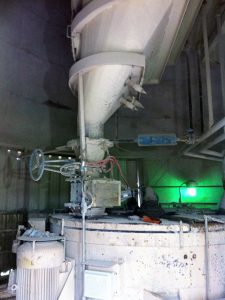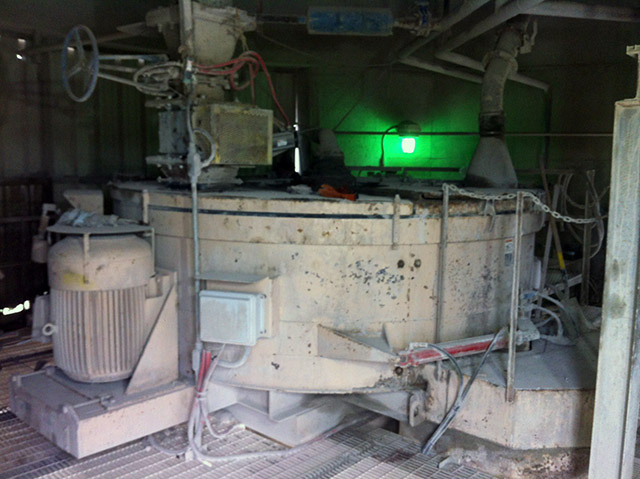In the production of cement, there is a waste product collected from the hot gas discharge of a kiln. This waste material is commonly called Cement Kiln Dust, or CKD. Because there are limited markets for CKD, it is usually sent to surface impoundments or landfills for disposal.
This extremely fine, dry, and dusty powder is typically conditioned by adding water to the solids before loading into trucks for disposal. CKD can be difficult to get a consistent moisture content to ensure that all the dry solids are wetted to a dustless mixture.
A common method to condition the CKD is to use a continuous mixer, like a pug mill. Some common problems with pug mills for this type of application is either over saturation or dry pockets of dust. This inconsistent mixing process can lead to problems. If too much water is added, it can cause solids to harden as soon as the mixer is stopped, causing a headache for the maintenance personnel to break out the hardened dust from around the mixer shaft. Another common problem with over saturation is additional water weight that reduces the amount of solids transported in each load. This can be costly if shipping a long distance. Finally, if the mixture is too wet, it can drain on the roadway from certain types of trucks.
Primary Concern
If the solids are under conditioned and still dry, this can cause dust escaping around the plant site or even as the trucks transport the solids down a public road. This is the main reason why the industrial mixer shown below was installed.
Solution
A high speed, high intensity mixer guarantees a dustless mixture discharged into the trucks. Typically a Turbin, or pan style mixer, with paddles rotating at speeds up to 600 feet per minute can condition a batch of CKD in 30 seconds. This works because we control each batch by adding the same weight of solids, the same volume of water, and mixing this for the same amount of time. This process can be done at rates as high as 200 tons per hour @ 50 pounds per cubic foot.
A truck driver can start the mixing process from a simple control station mounted next to the truck station. Additional options like a rubber lined pan and automatic wash down system, reduce the operational time or maintenance personnel needed to clean and maintain the mixer.
Ask a Question or Get a Price Quote


